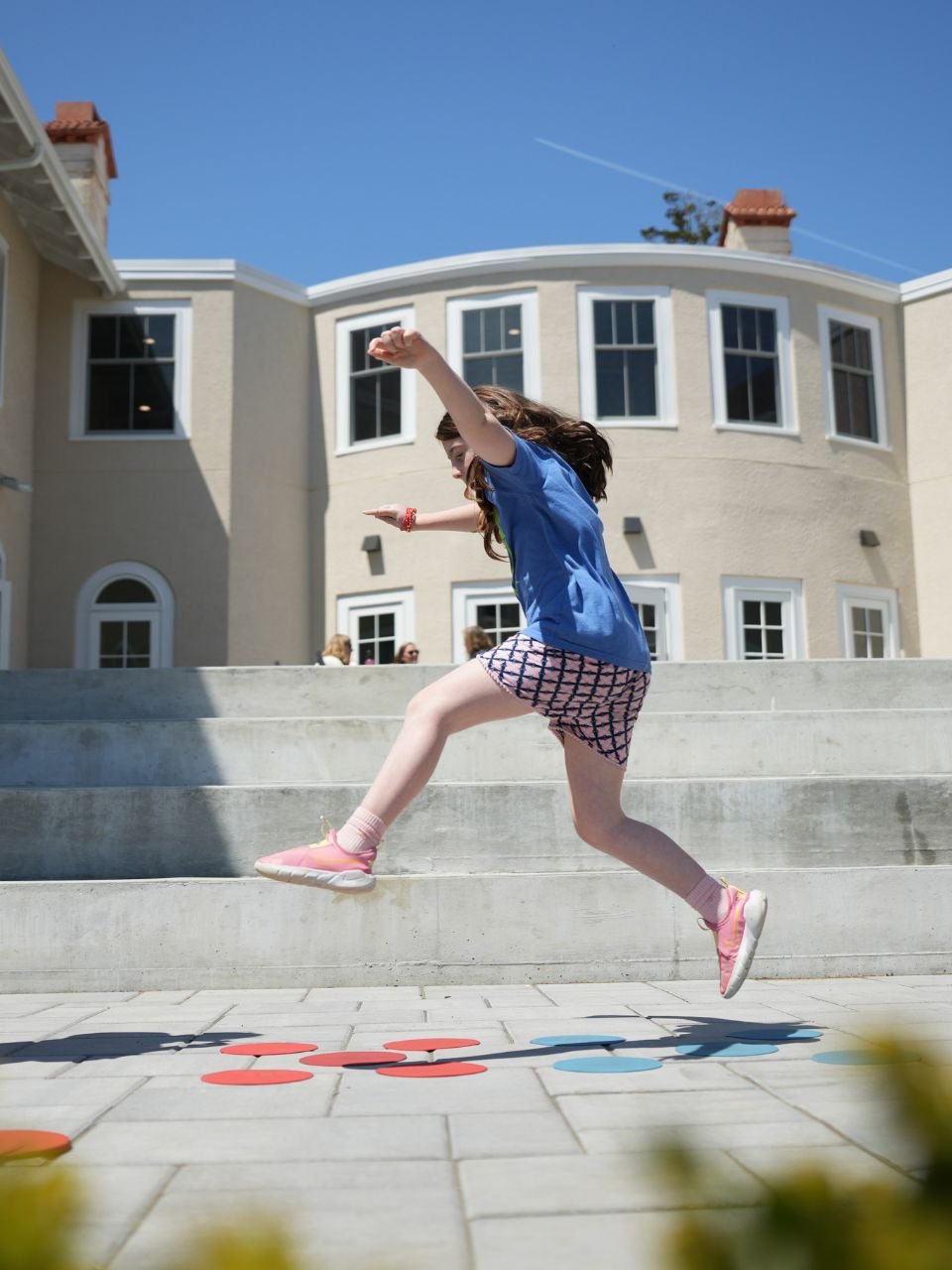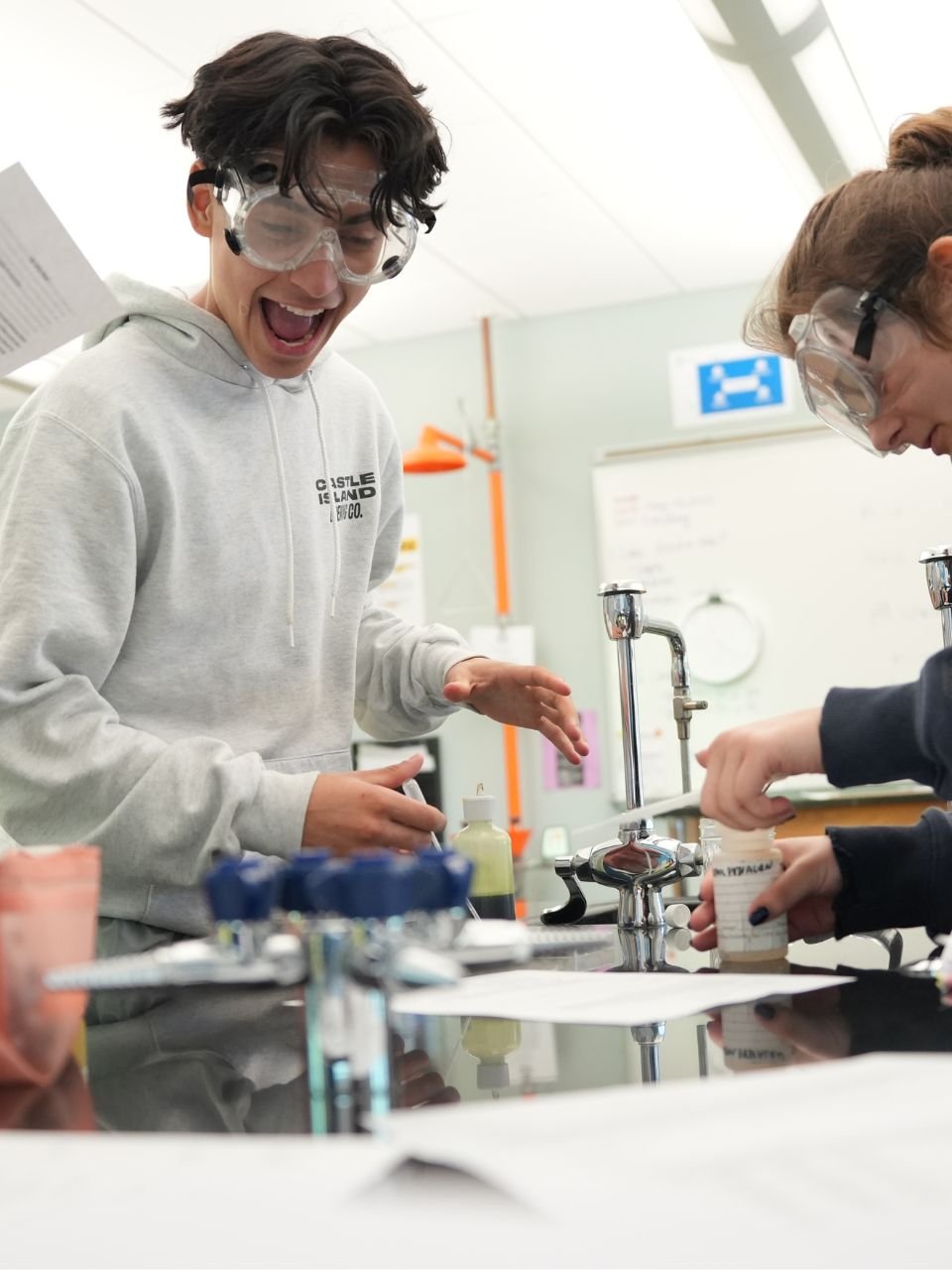- Our School
- Our Advantage
- Admission
- Elementary•Middle School
- High School
- Summer
- Giving
- Parent Resources
- For Educators
- Alumni
« Back
Using Mindfulness to Reduce Stress and Anxiety
November 28th, 2018

This is the fourth post in a five-part series about students, stress, and anxiety. The first article is an overview of anxiety, the second article looks at a relaxation program for elementary and middle school students, the third discusses how a student learned to manage her anxiety, the fourth explores how mindfulness can reduce anxiety, and the fifth covers the relationship between language-based learning disabilities and anxiety.
By Erin Brewer
Take a deep breath in, and a long breath out. Take a moment to notice how you feel, physically, mentally, and emotionally. Feel your feet on the floor. Whether seated or standing, allow your shoulders to track over your hips and your ears to draw back in line with your shoulders, so that your chin lifts ever so slightly. Relax your belly and give your shoulders permission to settle. Press your tongue gently against the top of your mouth while your lips part ever so slightly and your gaze softens. Now bring your awareness to your nostrils. Notice the temperature of the air going in on your next inhale, and then feel the temperature, and the texture of the breath on the exhale. Take another deep breath in, and a long breath out.
Welcome to the present moment. You have arrived through meditation.
Many people think meditation means clearing the mind of all thoughts. That’s an enormous challenge because the brain is designed to think—and it doesn’t come with an “off” switch. I explain to students that mindfulness (meditation) is awareness. It is awareness of the present moment and of the habits of mind that may draw your mind away from the present. Mindfulness practices, such as repeating a mantra, counting your breaths, or doing a body scan, pull you from thinking of the past (what’s done is done) or the future (over which there is no control) and bring you back to the now.
Research Finds Mindfulness Effective in Reducing Stress
Stress and anxiety often result from persistent thoughts about the past or future. Young people are not immune to stress or anxiety. In fact, the number of students who experience anxiety has reached alarming rates on school and college campuses. According to the National Institute of Mental Health, about 32% of adolescents have been diagnosed with anxiety.The National College Health Assessment reports that 64% of college students have experienced “overwhelming anxiety” in the past 12 months.
Many campuses have responded by offering students services to reduce stress and anxiety. Mindfulness training is one of them—and it works. In a 2017 study, a group of adults diagnosed with generalized anxiety disorder participated in an eight-week program either in mindfulness-based stress reduction or stress management education. The group that took the mindfulness course had “sharply reduced stress-hormone and inflammatory responses to a stressful situation” than participants in the stress management class.
“Mindfulness meditation training is a relatively inexpensive and low-stigma treatment approach, and these findings strengthen the case that it can improve resilience to stress,” said Elizabeth A. Hoge, M.D., lead author of the study and associate professor at Georgetown University.
Training the Brain to Enter the Present
Mindfulness can often reboot our systems by making a person more aware of when their mind has wandered so that they can recognize that, be aware of it, and then take the necessary steps to redirect to the present moment. This allows a person to feel less like they are stuck on a runaway train and more like a conductor who is in charge of what they will dedicate mental bandwidth to—and where it will take them.
The practice of yoga is an excellent way to enter the present moment and reduce stress—it asks the participant to move with the breath. Each pose flows on an inhale or an exhale, and while holding a pose, rather than thinking about what is going on outside of the room, focus can be directed to alignment cues in the body. The same can be done with other activities as well, such as walking, coloring, or even doing the dishes! If a person is aware of what they are doing and moving with intention, rather than functioning on autopilot while the mind is elsewhere, then mindfulness is being practiced.
With Practice You’ll Learn to Control Your Thoughts
It’s very easy to feel like a powerless victim of your own thoughts. However, as you start to recognize habits of your mind or even awareness as to whether you tend to dwell on the past or stress about the future, you can start to take power back. Rather than being swept away, you can pause and reflect, “Oh I’m doing that thing again when I think… ” and over time you may start to notice your thoughts settling down.
So take a moment. Notice where your mind may have wandered just now. Start to bring your attention back to this moment. Feel your feet on the floor, and inhale to a silent count of four. Pause at the top of your inhale. Then slowly exhale to a count of four. Check in, and notice how you feel: physically, mentally, and emotionally. Welcome back to the present moment.
About the Author

Erin Brewer has been teaching at Landmark since 2010. She started a yoga program at the High School in 2013, and now serves as an academic advisor and in-house yoga instructor within the Physical Education Department. Check out her mindfulness video.
Posted in the category Social and Emotional Issues.






















